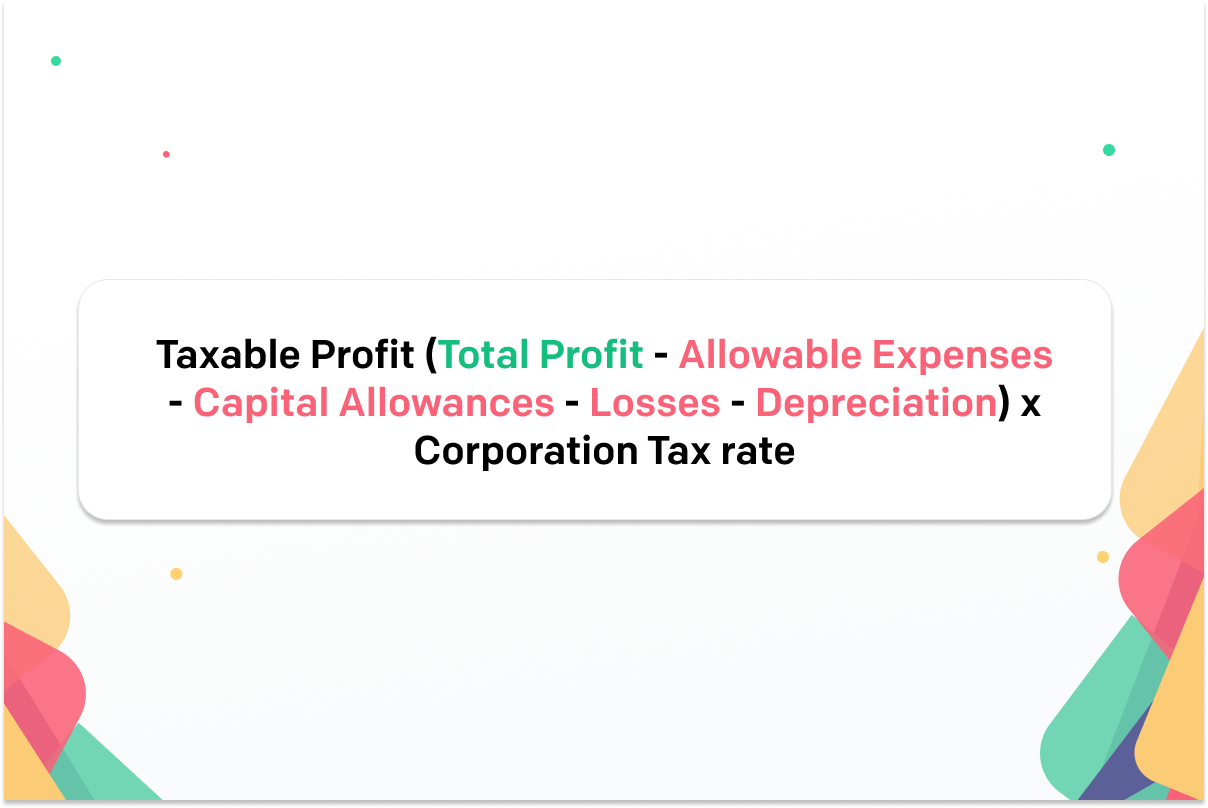
How to calculate Corporation Tax
March 7, 2023How to calculate Corporation Tax

Calculate total profit
Calculate business expenses
Capital allowances
Losses
Corporation Tax rates and thresholds from April 2023
| Rate | 2023 | 2022 |
|---|---|---|
| Small profits rate (companies with profits under £50,000) | 19% | N/A |
| Main rate (companies with profits over £250,000 | 25% | N/A> |
| Main rate (all profits except ring fence profits) | N/A | 19% |
| Marginal Relief lower limit | £50,000 | N/A> |
| Marginal Relief upper limit | £250,000 | N/A> |
| Standard fraction | 3/200 | N/A |
| Special rate for unit trusts and open-ended investment companies | 20% | 20% |





